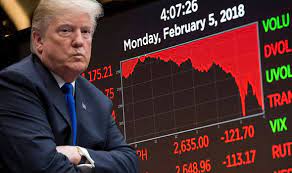
How Would Stocks Perform Under a Trump Presidency?
Now that Donald Trump is the presumptive winner of the Republican primaries and has a good chance of being elected as the next U.S. President, many persons are wondering how the U.S. economy and stocks might react to a Trump Presidency.
While the so-called “experts” have claimed that a trade war would soon ensue between the United States and China, as well as between a few other countries and the U.S. in the event that Trump were elected, I see little chance of that happening. That’s because China, Mexico and several other countries around the globe depend heavily on exports to the United States to sustain their economies.
For example, exports account for approximately 23% of China’s total output of goods and services – of the country’s gross domestic product (“GDP”) – and China’s exports to the United States account for approximately 18% of the country’s total exports.
Meanwhile, exports account for approximately 38% of Mexico’s GDP, and the country’s exports to the United States account for approximately 73% of its total exports.
As a result of China’s and Mexico’s huge dependency on exports to the U.S., I would expect those countries to work closely with a President Trump to maintain their positive trade status with the United States.
I would also expect Mexico’s government to find ways to reduce the massive number of its citizens that immigrate illegally to the United States every year in an effort to maintain its favorable trade relationship with the U.S.
Most importantly for financial market investors, I would expect the United States’ pace of economic growth to increase substantially, and for U.S. stock prices to appreciate sharply, in the event that Trump were elected as the next U.S. President. That expectation is based primarily on the likelihood that Trump and a Republican-controlled Congress would likely reduce tax rates considerably.
Outlined below are a few of Trump’s key proposals regarding taxes:
- Elimination of the marriage penalty and the Alternative Minimum Tax (AMT)
- Reduction of the business tax rate from 35% to only 15%.
When substantial reductions in tax rates like the ones proposed by Trump were enacted in the past, the U.S. economy grew at fast rates and U.S. stock prices rose substantially over the ensuing years.
For example, the U.S. economy grew at an average annual rate of around 3.6%, and the Dow Industrials rose by more than 4-fold, from 1922 to 1929 after the highest marginal tax rate was reduced to 58% in early 1922 from 73% in 1921 under the Warren Harding and Calvin Coolidge administrations.
In a similar manner, the economy grew at an average annual rate of around 5.1%, and the S&P 500 Index appreciated by 38%, from 1964 to 1968 after the highest marginal tax rate was cut to 77% in 1964, and to 70% in 1965, from 91% in 1963 under the Kennedy administration.
And, the economy grew at an average annual rate of around 4.6% while the S&P 500 Index rose approximately 150% from 1982 to 1989 after the highest marginal tax rate was reduced to 50% in 1982 from 70% in 1981 under the Reagan Presidency.
There’s no reason not to expect an outcome similar to the ones above in the event that Donald Trump were elected as the next U.S. President.
But, the good news doesn’t stop there, as Trump is proposing reductions in government regulations that curtail business investments.
And, he’s proposed a one-time repatriation of more than $2 trillion of cash held abroad by U.S. businesses at a substantially-reduced tax rate of only 10%, followed by an end to the deferral of taxes on corporate income earned abroad. That’s a very significant proposal considering that U.S. business hold approximately $2.4 trillion of cash in foreign banks.
So, I encourage you to stop worrying about a potential economic meltdown in the event that Donald Trump were elected as the next U.S. President. Instead of hurting the economy, my research indicates that the United States’ pace of economic growth would rise considerably and that stock prices would surge under a Trump Presidency.
Although I expect stocks to continue to trade in a volatile sideways pattern until the November 8 elections, my firm and I are currently monitoring approximately 15 stocks that we expect to rise sharply in the event that Trump is elected. We would expect a few of those stocks to double in less than 12 months under a Trump Presidency.










